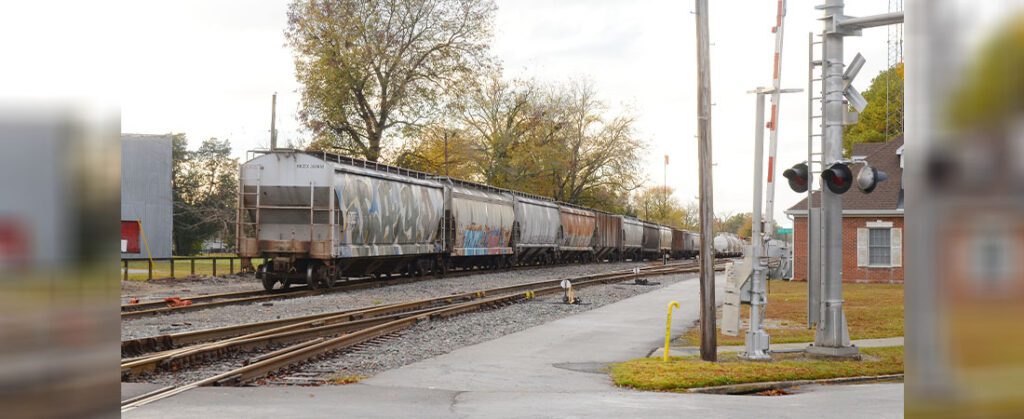
The City of New Bern is seeking grant funding to study a flood-prone portion of the city’s railroad corridor. Once the study is complete, the plan calls for a further grant application for construction work to improve the flow of stormwater in the area.
During their November 16 meeting, the New Bern Board of Aldermen approved a resolution authorizing the submission of an application for the Building Resilient Infrastructure and Communities Program Grant (BRIC) to aid the New Bern Rail Corridor Planning Study.
The study would focus on the rail corridor that starts at the intersections of George Street and Dunn Street and travels west to the edge of the city limits. The crossings in that area, which encompasses portions of Wards 1, 4 and 5, “exacerbate flooding in low-lying areas that experience significant flooding during 10-year storm events,” according to information included in the meeting agenda packet.
The information notes that while the rail bed is elevated to avoid significant flooding, it has in effect created a levee through low-lying areas that experience flooding during significant storm events. Although culverts were placed under the rail bed to alleviate stormwater backup, they have proven to be inadequately sized to handle the flow.
Chris Seaberg, community and economic development manager said the New Bern Rail Corridor Planning Study was initially recommended by New Bern Public Works staff to inventory rail crossings and develop a long-range plan to improve the flow of stormwater at crossings in need of improvement. He said the intent is to take the results of the study and apply for construction grants for the improvements.
“We are looking at undersized culverts that are under the rail bed and developing a plan to improve the flow of the stormwater in that area,” Seaberg said. “It obviously would include resizing those culverts that are inadequately sized.”
The City’s BRIC request is for the estimated cost of the study, $200,000. The grant, which is administered through the Federal Emergency Management Agency, requires a 25% match, which means the city would be required to put up $50,000. Seaberg said that cost share could consist of cash, donated or third-party in-kind services, or materials. The cost share could also be reduced if New Bern is determined by FEMA and the North Carolina Division of Emergency Management to qualify as an “Economically Disadvantaged Rural Community,” he noted.
Seaberg said the grant award will probably be announced next September or October. If New Bern receives BRIC funding, historic preservation and reviews of the study area will be required. He said the funding would likely not be available to the City until October of 2025.
After Mayor Jeffrey Odham said he was concerned that the city could possibly spend $50,000 on the study only to be turned down for construction funding, City Manager Foster Hughes commented, “We have been very successful in applying for construction grants, especially the Duffyfield Stormwater Project. We haven’t seen that faucet turn off yet for those grants from federal agencies, so I think we have a pretty good chance with our application process.”
Seaberg noted that Norfolk Southern and North Carolina Railroad Co., which own the rail line property, would ultimately have to approve the work. He said City staff have made contact with NCRR but have not received a response yet.
Odham said he and aldermen Bob Brinson and Rick Prill held a meeting with NCRR on November 14 concerning New Bern’s Union Station Depot.
“It was probably the best meeting I think that we’ve had with North Carolina Railroad over the years,” Odham commented. “If that’s a sign of what could be here, I’m optimistic. But all we have to go on is the history we have so far, and it hasn’t been great when it comes to changing any of the infrastructure.”
By Todd Wetherington, co-editor. Send an email with questions or comments.

